 W
WScotland is internationally known for its traditional music, which remained vibrant throughout the 20th century and into the 21st, when many traditional forms worldwide lost popularity to pop music. In spite of emigration and a well-developed connection to music imported from the rest of Europe and the United States, the music of Scotland has kept many of its traditional aspects; indeed, it has itself influenced many forms of music.
 W
W25 Scottish Songs was composed by Ludwig van Beethoven. The work was published in London and Edinburgh in 1818, and in Berlin in 1822. It is the only set among Beethoven's folksong arrangements to be assigned an opus number; the rest are only given WoO numbers.
 W
WThe ABRSM is an examination board and registered charity based in London, England, which provides examinations in music at centres around the world. ABRSM is one of five examination boards accredited by Ofqual to award graded exams and diploma qualifications in music within the UK's National Qualifications Framework. 'The Associated Board of the Royal Schools of Music' was established in 1889 and rebranded as ABRSM in 2009. The clarifying strapline "the exam board of the Royal Schools of Music" was introduced in 2012.
 W
WThe Celtic harp is a triangular frame harp traditional to Ireland and Scotland. It is known as cláirseach in Irish and clàrsach in Scottish Gaelic. In Ireland and Scotland, it was a wire-strung instrument requiring great skill and long practice to play, and was associated with the Gaelic ruling class. It appears on Irish and British coins and coat of arms of the Republic of Ireland, the United Kingdom and Canada.
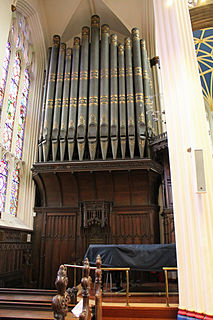 W
WChurch music in Scotland includes all musical composition and performance of music in the context of Christian worship in Scotland, from the beginnings of Christianisation in the fifth century, to the present day. The sources for Scottish Medieval music are extremely limited due to factors including a turbulent political history, the destructive practices of the Scottish Reformation, the climate and the relatively late arrival of music printing. In the early Middle Ages, ecclesiastical music was dominated by monophonic plainchant, which led to the development of a distinct form of liturgical Celtic chant. It was superseded from the eleventh century by more complex Gregorian chant. In the High Middle Ages, the need for large numbers of singing priests to fulfill the obligations of church services led to the foundation of a system of song schools, to train boys as choristers and priests. From the thirteenth century, Scottish church music was increasingly influenced by continental developments. Monophony was replaced from the fourteenth century by the Ars Nova consisting of complex polyphony. Survivals of works from the first half of the sixteenth century indicate the quality and scope of music that was undertaken at the end of the Medieval period. The outstanding Scottish composer of the first half of the sixteenth century was Robert Carver, who produced complex polyphonic music.
 W
WClassical music in Scotland is all art music in the Western European classical tradition, between its introduction in the eighteenth century until the present day. The development of a distinct tradition of art music in Scotland was limited by the impact of the Scottish Reformation on ecclesiastical music from the sixteenth century. Concerts, largely composed of "Scottish airs", developed in the seventeenth century and classical instruments were introduced to the country. Music in Edinburgh prospered through the patronage of figures including the merchant Sir John Clerk of Penicuik. The Italian style of classical music was probably first brought to Scotland by the cellist and composer Lorenzo Bocchi, who travelled to Scotland in the 1720s. The Musical Society of Edinburgh was incorporated in 1728. Several Italian musicians were active in the capital in this period and there are several known Scottish composers in the classical style, including Thomas Erskine, 6th Earl of Kellie, the first Scot known to have produced a symphony.
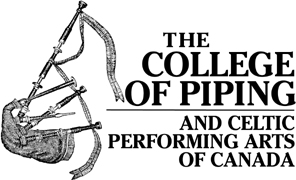 W
WThe College of Piping and Celtic Performing Arts of Canada, established in 1990 in Summerside, Prince Edward Island, Canada, is an international school teaching Highland bagpiping, Scottish-style snare drumming, Highland Dancing and Island step dancing. General (Ret'd) John de Chastelain was a director at the College. The College of Piping is the most prestigious piping organisation on Prince Edward Island. The College has won 5th place in Grade 3B at the 2012 World Pipe Band Championships and 4th place in Grade 3b at the 2007 World Pipe Band Championships. In addition to these accomplishments are numerous awards from Atlantic Canada, Quebec and the Eastern United States. Many of the members of The College of Piping Pipe Bands are also award-winning soloists, bringing home local, regional, national and international prizes for their respective grade.
 W
WThe Lamont Harp, or Clàrsach Lumanach is a Scottish Clarsach currently displayed in the National Museum of Scotland. It is believed to date back to the 15th century, and to have originated in Argyll. Along with the Queen Mary Harp and the Trinity College harp, it is one of the only three surviving medieval Gaelic harps.
 W
WThe Mid-Maryland Celtic Festival is a one-day festival celebrating all things Scottish, held annually in Mt. Airy, Maryland, United States.
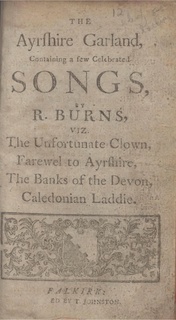 W
WMusic of Scotland in the eighteenth century includes all forms of music made in Scotland, by Scottish people, or in forms associated with Scotland, in the eighteenth century. Growing divisions in the Scottish kirk between the Evangelicals and the Moderate Party resulted in attempt to expand psalmondy to include hymns the singing of other scriptural paraphrases.
 W
WMusic of Scotland in the nineteenth century includes all forms of music production in the period, in Scotland or by Scottish people.
 W
WMusic schools in Scotland are available at several levels. Formal music education begins at 4½ years and can progress as high as postgraduate studies. Education in Scotland is a responsibility of the Scottish Government. Music is regarded as being an integral part of the culture of Scotland.
 W
WNa Gathan is a Scottish Gaelic Indie rock band from the Isle of Skye.
 W
WThe National Piping Centre is an institution in Glasgow, Scotland, dedicated to the playing of the bagpipes, to include not only the Great Highland Bagpipes, but also the Scottish smallpipes and Irish uileann pipes, as well as other traditional musical instruments.
 W
WScottish opera is a subgenre of Scottish music. This article deals with three separate, but overlapping subjects:Opera on Scottish themes, subject matter, or inspired by Scottish writers Opera by Scottish (-based) composers Opera in Scotland, including performers, production personnel, and opera companies, etc.
 W
WA pipe band is a musical ensemble consisting of pipers and drummers. The term pipes and drums, used by military pipe bands is also common.
 W
WA pipe band is a musical ensemble consisting of pipers and drummers. There are many such bands in the world, which play for ceremonial purposes, recreation, competition or all three. This list encompasses only notable pipe bands with their own Wikipedia page.
 W
WA pipe banner is a decorative flag for the Scottish Highland bagpipes. It is used when a piper performs at high-profile or State occasions where the pipe banner will be tied to the bass drone of her or his bagpipes. It is a rather expensive handmade item embroidered with bullion threads.
 W
WThe Queen Mary Harp or Lude Harp, is a Scottish clarsach currently displayed in the National Museum of Scotland. It is believed to date back to the 15th century, and to have originated in Argyll, in South West Scotland. It is one of the three oldest surviving Gaelic harps, the others being the Lamont Harp and the Trinity College Harp.
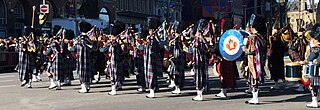 W
WThe Royal Canadian Air Force Pipes and Drums (RCAFPD) is a military pipe band unit composed of current members of the Royal Canadian Air Force. The unit was formally established in October 1949 and is the longest continuous serving Air Force Pipe Band in the Canadian Forces. All of its 40 members are volunteers who are drawn from both the military and civilian sphere. At the time of its foundation, it was known as the RCAF Station Rockcliffe Pipe Band.
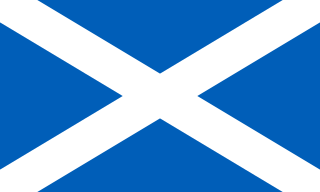 W
WThe participation of Scotland in Eurovision Choir began in Gothenburg, Sweden, at the Eurovision Choir 2019 contest. BBC Alba are responsible for the selection process of their participants. Their first conductor was Joy Dunlop. This was the first time Scotland participated in any of the Eurovision Network events, outside of participating as the United Kingdom.
 W
WThe Scots Musical Museum was an influential collection of traditional folk music of Scotland published in 1797. While it was not the first collection of Scottish folk songs and music, the six volumes with 100 songs in each collected many pieces, introduced new songs, and brought many of them into the classical music repertoire.
 W
WGeorge Thomson (1757–1851), born at Limekilns, Fife, Scotland, was a noted collector of the music of Scotland, a music publisher, and a friend of Robert Burns. He was clerk to the board of trustees in Edinburgh for 60 years. His A Select Collection of Original Scottish Airs for the Voice came out in five volumes between 1799 and 1818, and included contributions from Burns, Walter Scott and Thomas Campbell. Thomson published folksong arrangements by Joseph Haydn, Ludwig van Beethoven and Johann Nepomuk Hummel.
 W
WThe United States Coast Guard Pipe Band is a pipe band and private military unit composed of current and former United States Coast Guard personnel. Though a privately maintained entity, it is formally recognized by the U.S. Coast Guard and provides support to official Coast Guard ceremonies including changes-of-command, funerals, and ship commissioning. The unit was established in 2001 and formally recognized by the U.S. Coast Guard as a Coast Guard-affiliated organization the following year.